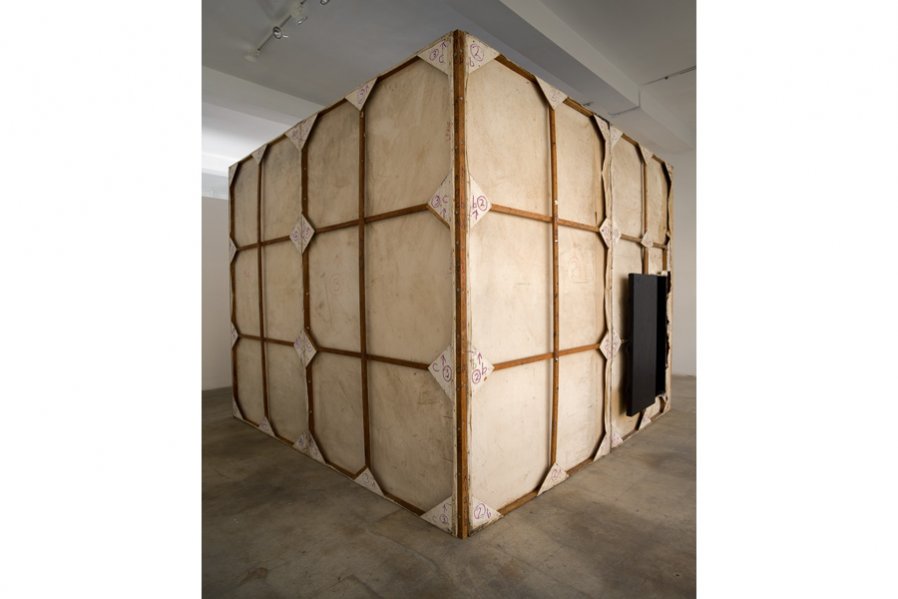
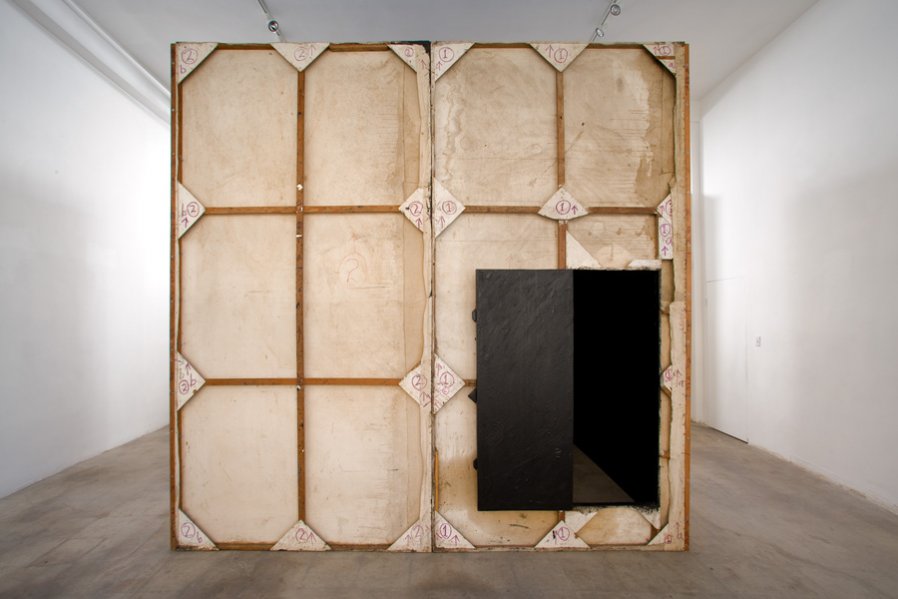
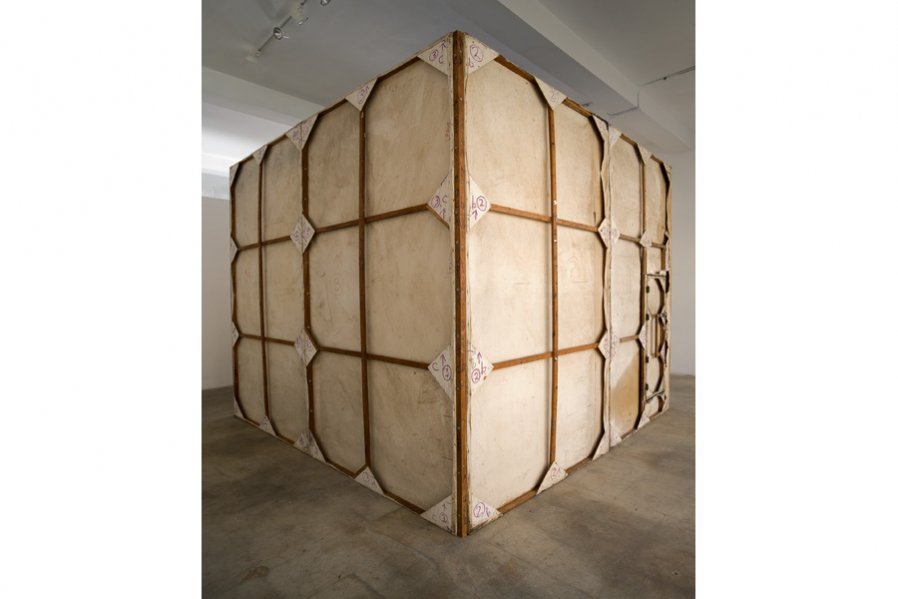
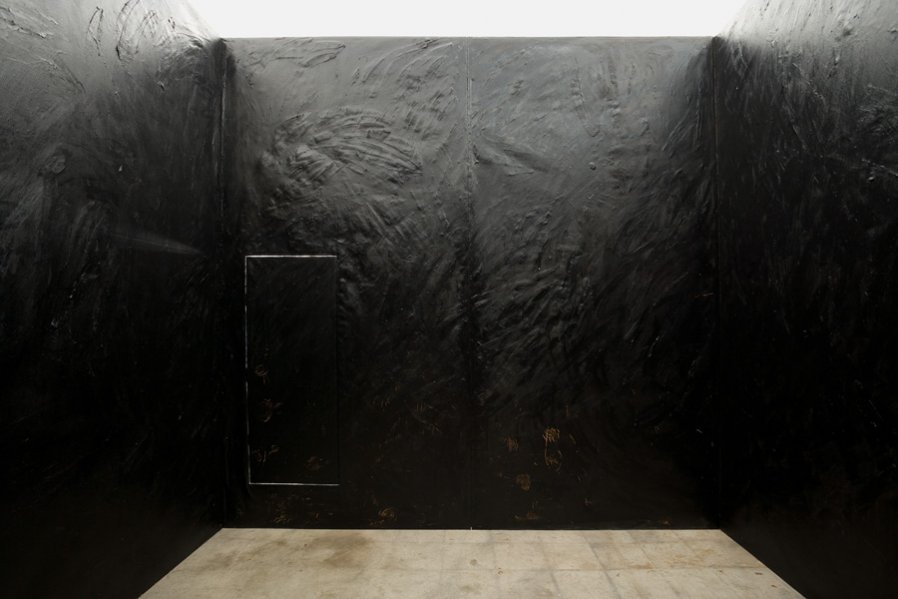
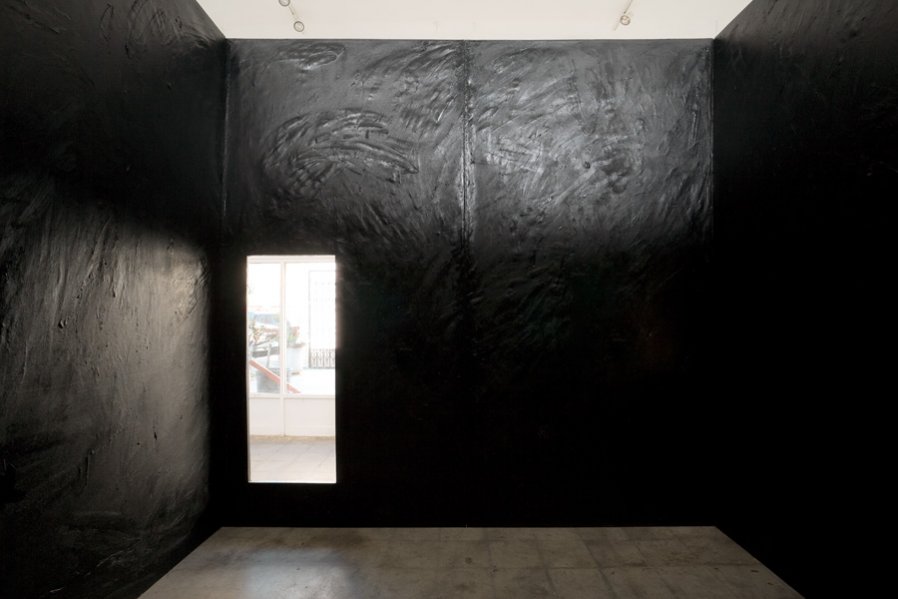
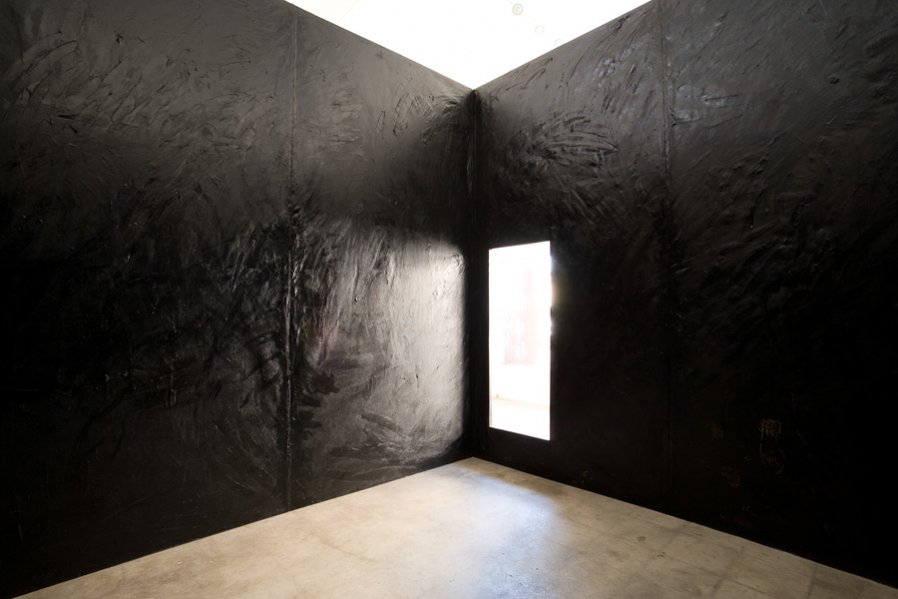
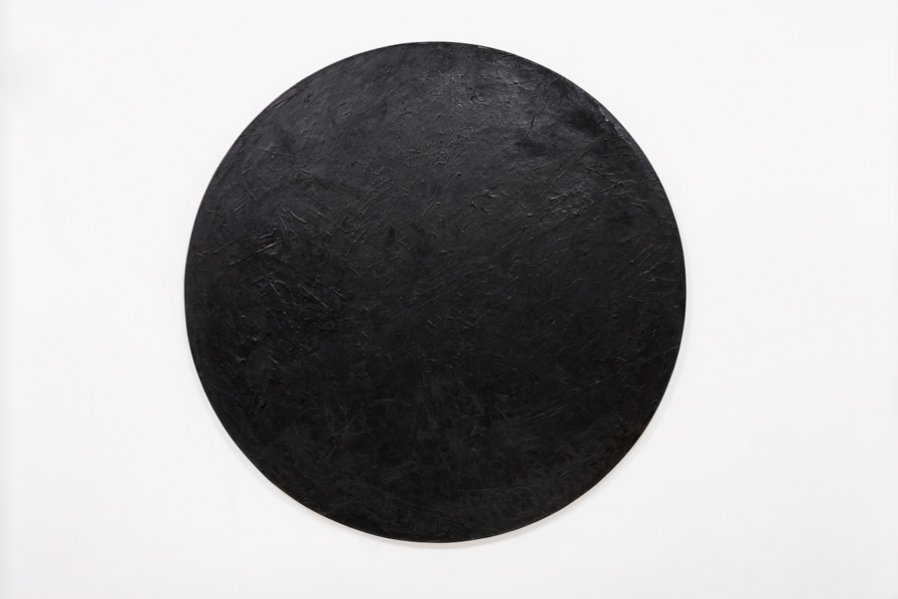
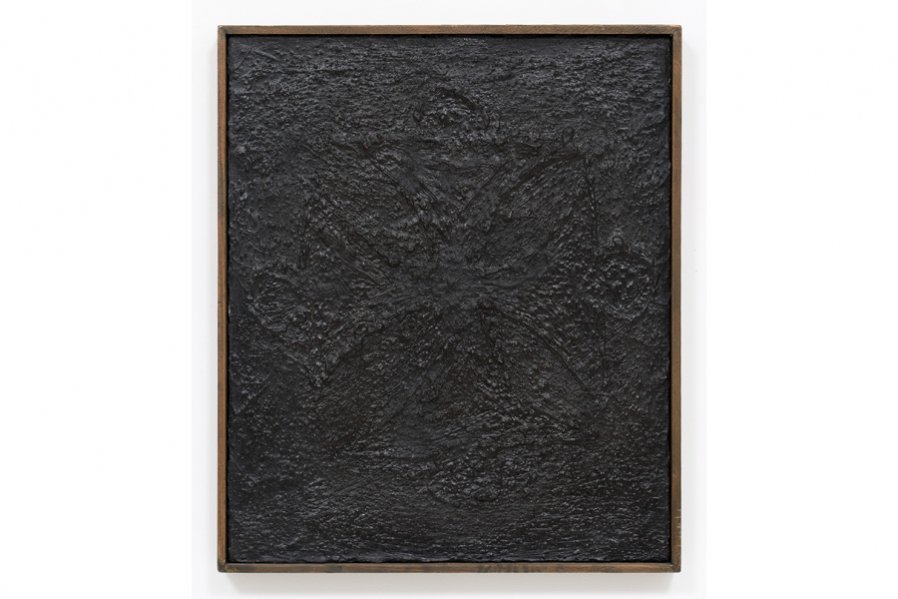
- Opening Reception: March 21st 2008, 6-8 pm
The Box gallery is pleased to present a politically charged exhibition by California artist Wally Hedrick. This exhibition will include Hedrick’s infamous War Room, 1967/68-2002, the most monumental of his Vietnam Series. From 1957 to 1973 Hedrick painted the Vietnam Series, a group of black monochrome paintings. Hedrick painted black over the top of his previous paintings, removing all color and imagery, as a gesture of protest against the Vietnam War. He covered his paintings with blackness, creating a painted void.
The War Room 1967 /68-2002 is comprised of eight canvases approximately 5. 5’ wide and 11’ tall, all painted a deep black. Hedrick referred to these canvases as “wounded veterans.” These canvases are bolted together to create a freestanding square room that could be entered via a small door in one of the canvases, thus creating architectural painting. The black painted surfaces of the canvases face inward and the backs of the canvases face outward. The War Room is an environmental painting where the viewer enters a small enclosure of painted blackness. The viewer is left to consider the encompassing darkness and contemplate the vacuity that this space creates. Hedrick refused to ignore the war and instead created a work of cultural and political significance. After the Vietnam War ended he repainted these canvases black in protest of the Gulf War in 1992 and the Iraqi war in 2002.
Along with the War Room, The Box will exhibit other paintings that expose both his strong anti-war sentiments and his interest in exploring different styles of painting. Hedrick did not want to be classified into any particular style or movement because he was interested in exploring multiple avenues of artistry. Some of the paintings that will be exhibited will include other paintings of the Vietnam series such as a large circular painting, Rhondo, 1970-1992-2002 and Vietnam Series XXI -Old Generals Never Die, They Just Send Young People to Their Death, 1966-2002 as well as a small painting done in protest of the Iraqi war, Black Bush Burning, 2002. An American flag painting titled Burn Me!, 1990, to be exhibited at The Box, will show an additional style of painting that Hedrick explored. Burn Me!, is a continuation of Hedrick’s flag paintings, many of which were painted over with black during Hedrick’s protest to the Vietnam War.
One flag painting that didn’t get painted over is Hedrick’s historical, Peace, 1953; painted a year before Jasper Johns’s Flag, 1954. Hedrick’s Peace was painted with a playful yet direct method with the American flag filling the rectangle. Unlike Johns who painted a pop icon, Hedrick turns the flag painting into a political statement by painting the word ‘peace’ in playful black letters floating over the image of the flag. Peace, was a protest of the Korean War which Hedrick was a decorated veteran of; Hedrick took the death of the 54,000 who died in the war by 1953, personally. Peace, 1953 is currently being shown as part of Paul McCarthy’s Low Life Slow Life: Part 1, CCA Wattis Institute for Contemporary Arts, San Francisco. Peace, 1953 was a precursor to Burn Me!, 1990 that was done in a similar style, with black flowing lettering with the command ‘Burn Me!” floating over the flag, as if to challenge the viewer to consider their own patriotic beliefs.
Hedrick met Jay DeFeo at California College of Arts and Crafts and they were married in 1954. During the time they were together DeFeo painted The Rose, 1958-64 and Hedrick began the Vietnam series, 1957-1973. Wally Hedrick and Jay DeFeo were important figures in the art and beat culture of the 1950s/60s in San Francisco, CA. Hedrick was a founder of The 6 Gallery, where Allen Ginsberg first read Howl. Hedrick died at the age of 75 in 2003.
Wally Hedrick rejected the formal attitudes of Clement Greenburg abstraction for a personal and social, political art activism. The Box believes that the work of Wally Hedrick continues to be relevant at this time of political turmoil.